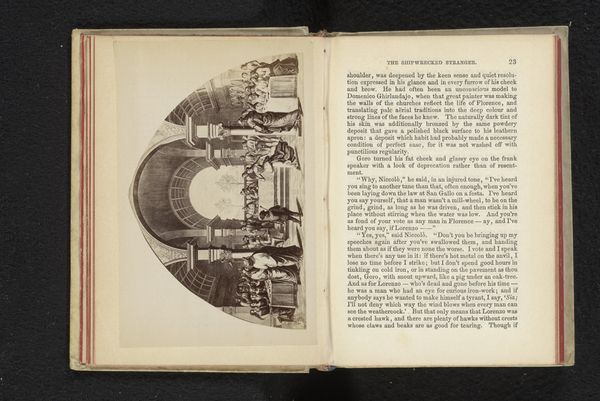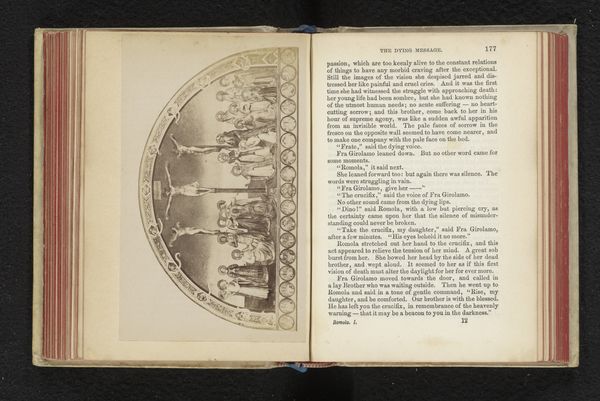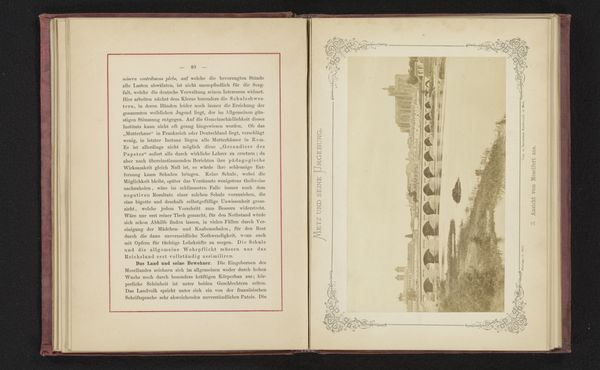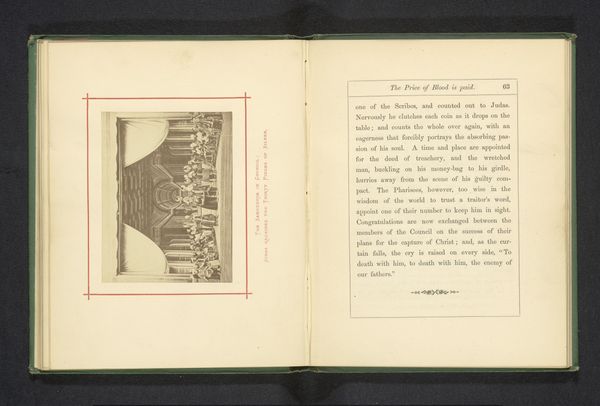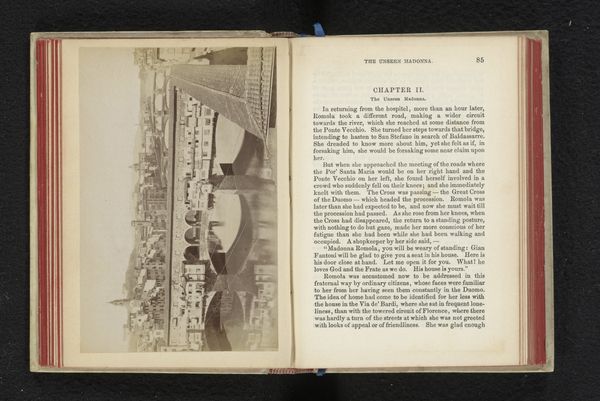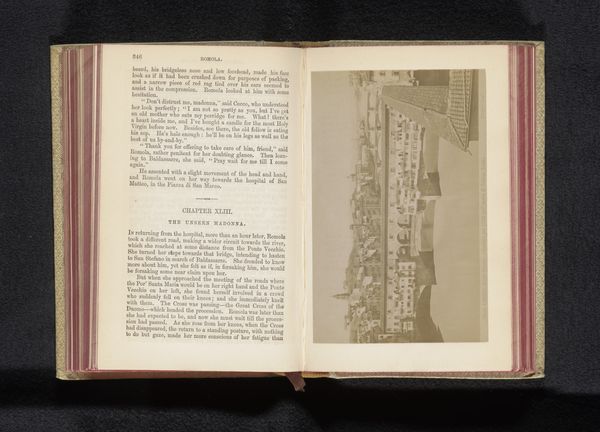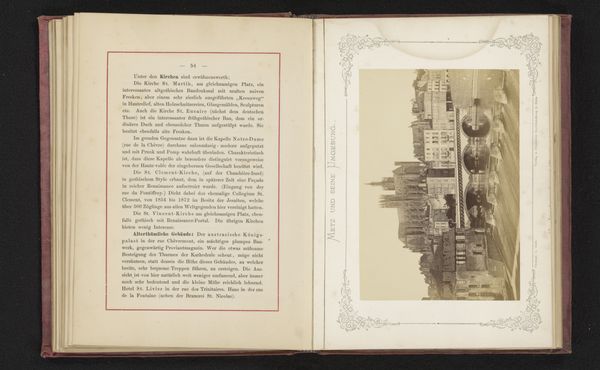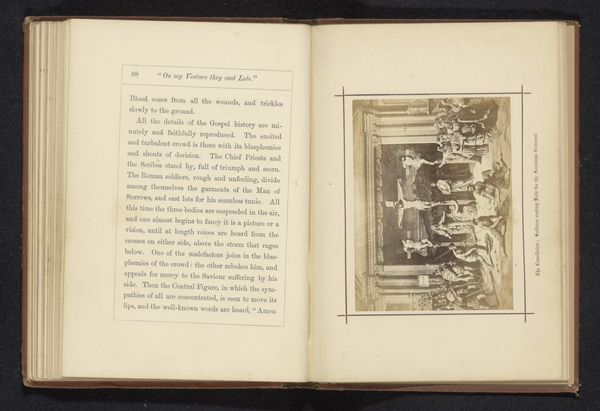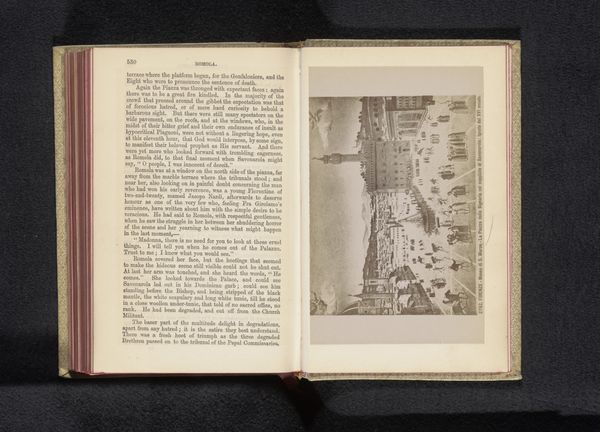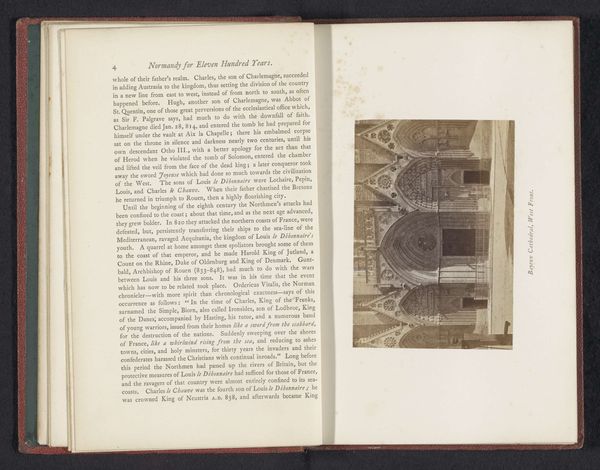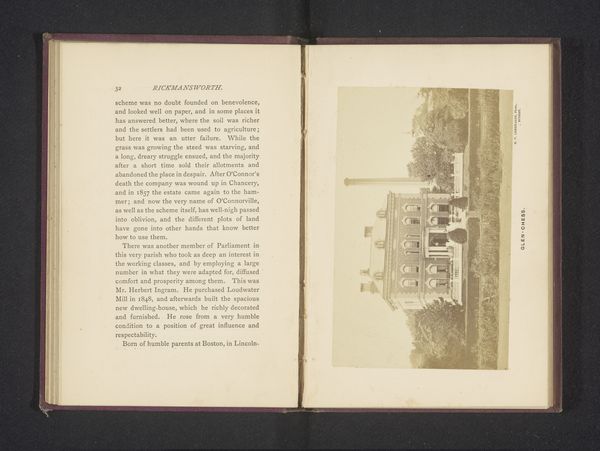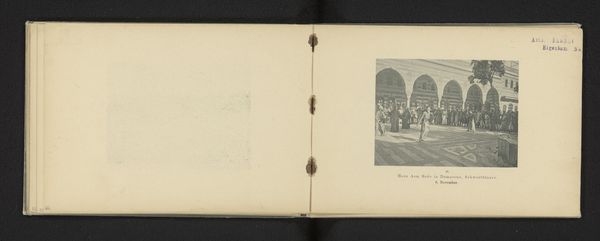
Fotoreproductie van een fresco in het San Marco-Klooster te Florence, voorstellende de Kruisiging before 1890
0:00
0:00
print, fresco, photography
#
narrative-art
# print
#
figuration
#
fresco
#
photography
#
history-painting
#
italian-renaissance
Dimensions: height 97 mm, width 138 mm
Copyright: Rijks Museum: Open Domain
Editor: Here we see "Fotoreproductie van een fresco in het San Marco-Klooster te Florence, voorstellende de Kruisiging," a photographic reproduction of a fresco, dating from before 1890. I find the circular composition very interesting. What can you tell me about the cultural context surrounding this reproduction? Curator: This image speaks volumes about the institutional frameworks shaping our understanding of Renaissance art. The act of photographing and reproducing a fresco—originally painted on a wall within a monastic setting—transforms it into a commodity, a portable object of study and devotion. This reflects the 19th-century’s growing interest in art history as a discipline, fueled by photography’s ability to democratize access. How do you think this changes our perception of the original fresco? Editor: That's a great point. By removing the fresco from its intended architectural and spiritual context, we lose a certain aspect of its original meaning. It’s presented now as a standalone artwork rather than as part of a larger devotional space. Curator: Exactly. The political implications are also key. Think about the rising nationalism of the 19th century. Reproductions like this were often used to showcase national artistic achievements, reinforcing ideas about cultural superiority. This image, circulated perhaps for educational purposes or as a souvenir, helped shape a particular narrative around the Italian Renaissance. Does it feel reverent or analytical to you? Editor: I'd say analytical, even removed. Knowing this was a devotional fresco, what would that space have felt like versus viewing this? Curator: The contrast is significant. The original fresco functioned within a controlled environment, shaping the experience of the monks who lived and prayed there. Its removal from that context alters its function entirely, subjecting it to new interpretations and uses within a broader, public sphere. This photograph becomes a tool, consciously or unconsciously, in the construction of a specific cultural narrative about the Renaissance. Editor: That's fascinating. So, the meaning shifts based on how and where it's consumed. Curator: Precisely! The image, while seemingly objective, is deeply implicated in the social and political currents of its time, constantly being reinterpreted. Editor: I'll definitely be thinking about that shift of purpose, the contextual evolution from a devotional tool to academic symbol! Curator: It truly changes how we interact with history.
Comments
No comments
Be the first to comment and join the conversation on the ultimate creative platform.
